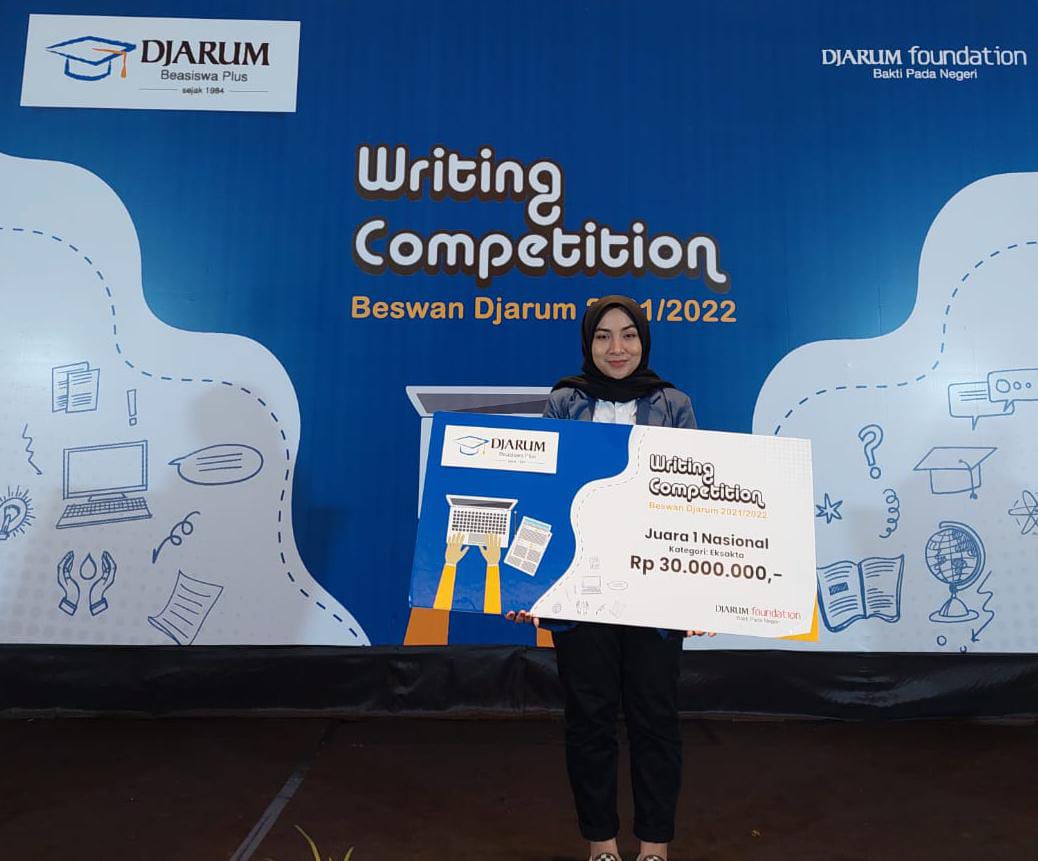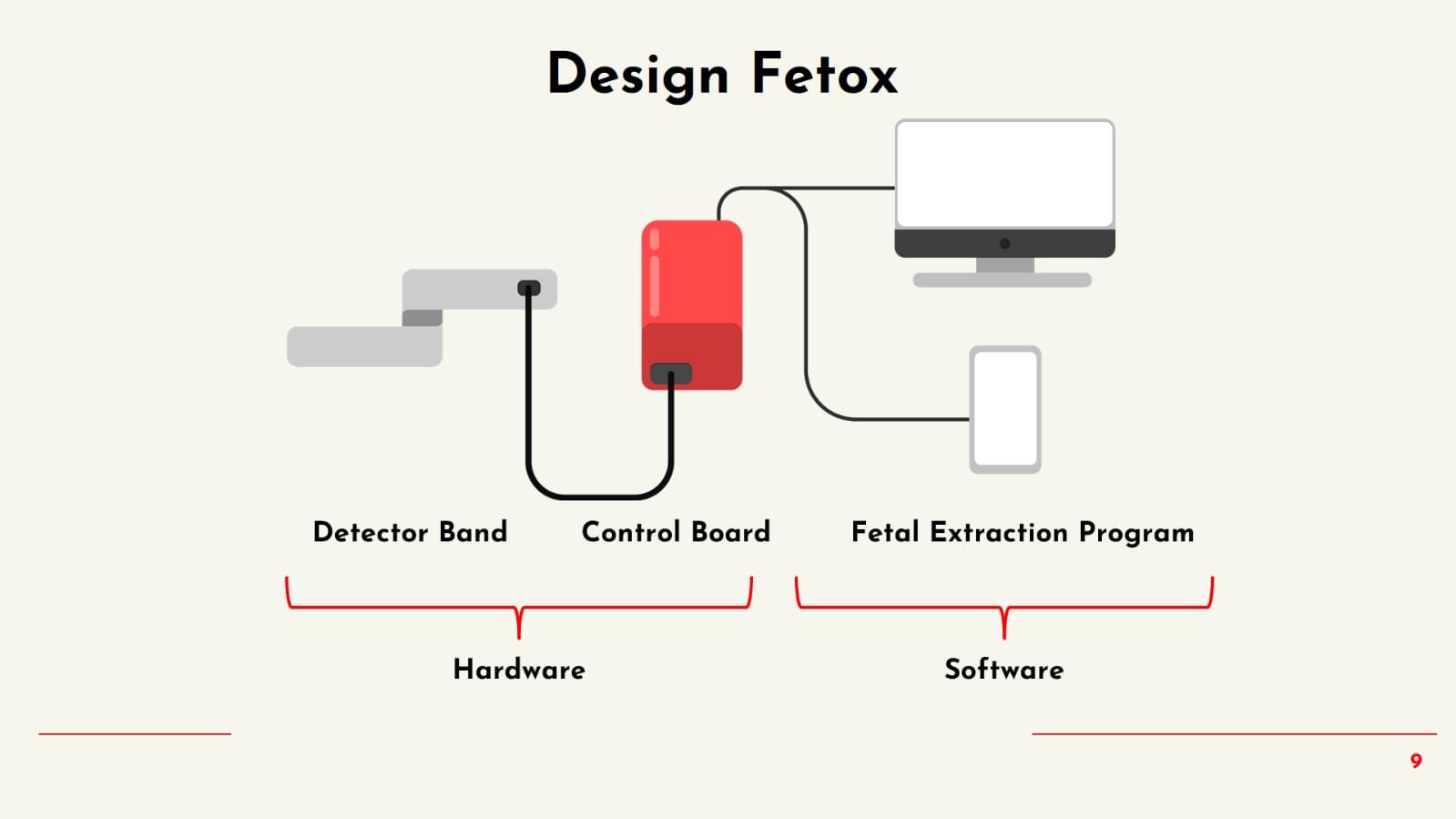Fetox, An Innovation of ITS Student to Reduce The Risk of Infant Mortality

Najla Rasikha Putri Harza when receiving the 1st place award in the Writing Competition organized by Beswan Djarum, Djarum Foundation in Bali
ITS Campus News – The high infant mortality rate due to uterine asphyxia is the background for the students of the Sepuluh Nopember Institute of Technology (ITS) to initiate innovation while helping others. Through innovation in the form of scientific papers (KTI) with a focus on non-invasive fetal oximeter design projects, he won 1st place in the Writing Competition organized by Beswan Djarum, Djarum Foundation in Bali, recently.
Regarding uterine asphyxia, this disease is one of the most common physiological effects of hypoxia, namely the condition in which the body’s tissues experience a lack of oxygen. At a high level of severity, hypoxia can cause infant mortality because it is caused by damage to the brain and organs which is then called birth asphyxia. “Seeing that, it needs to be further analyzed for effective ways to diagnose complications that can occur during pregnancy,” he explained.
In proposing this idea, Najla designed an integrated system consisting of hardwareand software to perform non-invasive measurements of fetal oxygen saturation (SpO2). This tool is called Fetox (Fetal Oximeter). The Fetox system itself consists of hardware consisting of detector band which contains emitter and detectors to emit photons and capture the reflected photon signal.
The signal will then be forwarded through the control board to control the work of the band detector and extract fetal signals, as well as software in the form of a program to display visualization of fetal SpO2 data . The signal that has been detected by the detector band is channeled to the control board to control the size of the photons injected into the mother’s uterus, amplify the signal, and perform signal extraction on the microcontroller.

Fetox design scheme through KTI from ITS students with the title Non-Invasive Fetal Oximeter to Detect Gynecological Hypoxia Using Optode Control and Fetal Signal Extraction Algorithm
Furthermore, the results of signal extraction performed by Fetox will be displayed on User Interface App installed on a laptop or smartphonee, so that Fetox is portable. The measurement result of fetal SpO2 level and status will be displayed on interface program in real time. “With an integrated system, users can quickly get medical assistance by using the hospital emergency room hotline menu,” he said.
What makes it is even greater is that this innovation called Non-Invasive Fetal Oximeter to Detect Gynecological Hypoxia Using Optode Control and Fetal Signal Extraction Algorithm has been heralded through a pilot program conducted in Jember District, East Java , in collaboration with the Jember Health Office regarding the procurement and distribution of Fetox. This implementation is also targeted to reduce the infant mortality rate by 38.27 percent and a general reduction of 9.56 percent.
The resulting work appears based on the results of a design project which is known to be one of the compulsory courses in Biomedical Engineering which was taken in semester 6. From this course, Fetox was born which is the main idea presented by Najla. At the end of the semester, Fetox innovation also won the 2nd Place Best Planner (Best Project) award at the end of the course presentation. “Finally I decided to take and develop Fetox’s ideas even further,” he said.
By achieving various achievements that have been made since the beginning in her own department, Najla continues to have full hope that going forward with the relevant agencies there will be massive product downstreaming. It is also expected that it can be further developed and patented so that it can help reducing infant mortality in Indonesia caused by uterine asphyxia. (ITS PR)
Related News
-
ITS Sends Off 12 Free Mudik Vehicles Ahead of Eid Al-Fitr
The dispatch of 11 bus fleets carrying ITS students for the Free Mudik ITS 2024 ITS Campus, ITS News
December 24, 2022 15:12 -
ITS Lecturer Wins 2024 Female Science Talents Intensive Tracks from Germany
Sri Fatmawati SSi MSc PhD, a lecturer at the Department of Chemistry, ITS, has emerged as the winner of
December 24, 2022 15:12 -
ITS Shares Tips & Tricks on SNBT 2024 Socialization
(from left) Executive Secretary of SNPMB 2024, Bekti Cahyo Hidayanto SSi MKom, Head of the Admissions Subdirectorate at ITS,
December 24, 2022 15:12 -
Supporting Defense in Indonesia, ITS Professor Creates Anti-Radar Material
Professor Dr. Mashuri SSi MSi, while delivering his academic oration on anti-radar materials during the ITS Professorial Inauguration. ITS
December 24, 2022 15:12
